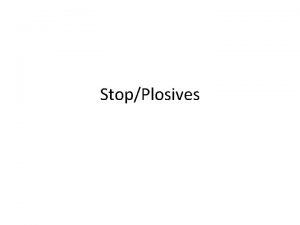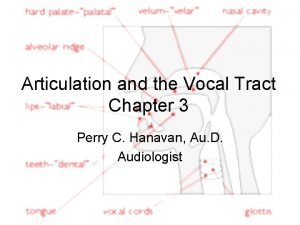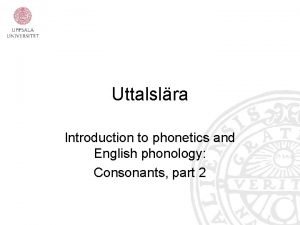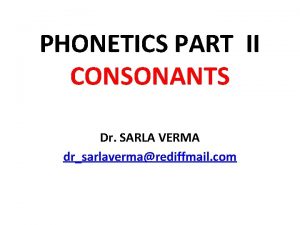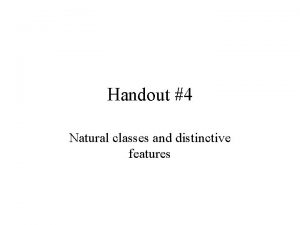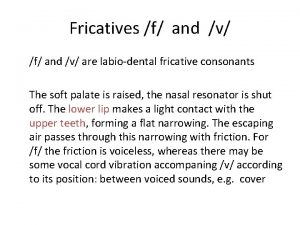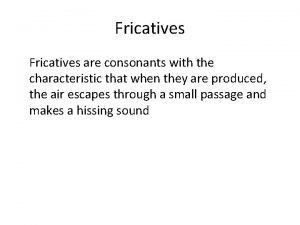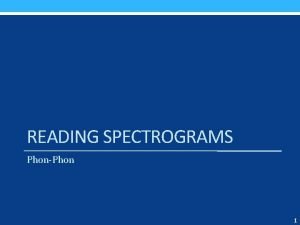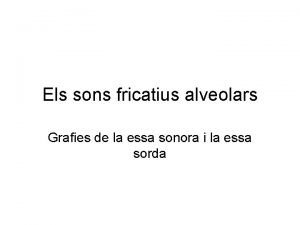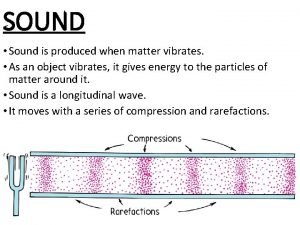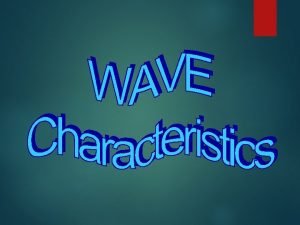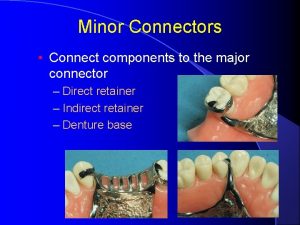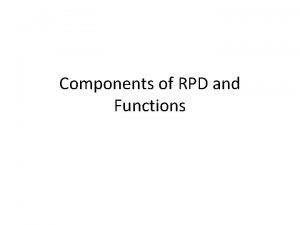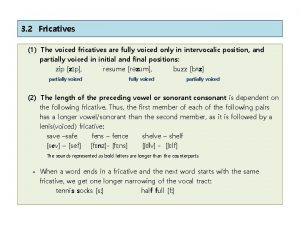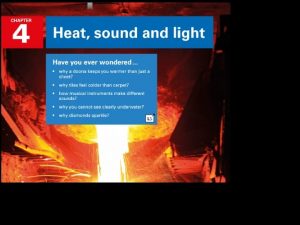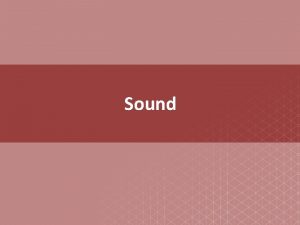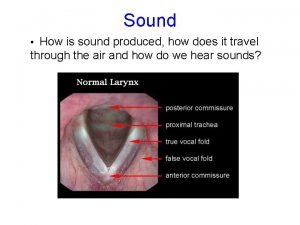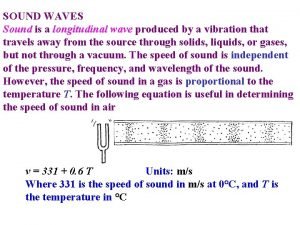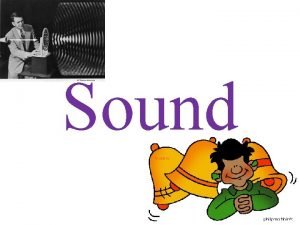StopPlosives Sound Source Stops fricatives and affricates produced





















- Slides: 21

Stop/Plosives

Sound Source • Stops, fricatives and affricates produced in vocal tract as the sound source • For voiced stops, fricatives and affricates, there are two sound sources – Periodic laryngeal source combined with – Aperiodic vocal tract sound source • Aperiodic sound is produced by two different manners: – Sudden release of air pressure (burst/transient) behind closure • Stop/plosives – Turbulence as air rushes through a narrow constriction • fricatives

Manner of Production • Stops produced with – complete closure within the oral cavity, – build up of pressure behind the closure and – rapid release of closure with air rapidly expelled

Acoustic Events Divided into five components 1. Occlusion 2. Transient 3. Frication 4. Aspiration 5. Transition In practice, it is difficult to differentiate the transient from the frication, thus, this complex is generally referred to as the burst.

Acoustic Events • occlusion is the period during which there is a stoppage of the airflow during which the pressure increases. It is characterised by silence or the absence of energy. Voiced stops may have low frequency (0 - 500 Hz) periodic energy during this phase. • transient corresponds to the release of the closure. It is characterised by a spike on the spectrogram of intense energy with a duration of about 10 msec. • frication component is the result of the combination of high intraoral pressure being released through a narrow opening at the point of release. • aspiration phase is the result of the vocal tract opening even further with turbulence through the glottis rather than the oral constriction. Formants are often present during this phase. • transition is the component where formants are present and the oral tract is moving to the position for the following vowel target. • In practice it is difficult to differentiate the transient from the frication so this complex is generally referred to as the burst.

ACOUSTIC CUES TO THE VOICED/VOICELESS DISTINCTION 1. 2. 3. 4. VOT F 1 of vowel following stop/plosive Preceding vowel duration Other cues

1. Voice Onset Time (VOT) • Voiced and voiceless stops differ in the coordination between supralaryngeal and laryngeal events – Difference is referred to as differences in Voice Onset Time (VOT) • Voice onset time is the time that voicing begins relative to consonant release • In English, voiceless stops have large VOT values and voiced stops have small or negative VOT values. – Negative VOT occurs when periodicity begins before stop release i. e. during closure • English speakers hear a consonant as voiceless if VOT is over 25 msec for bilabials, over 35 msec for alveolars and over 40 msec for velars • VOT values separating voiced from voiceless stops are language specific

1. Voice Onset Time (VOT) • Spanish and French make use of prevoiced stops (negative VOT) and contrast these with positive VOT stops. English does not recognise a difference between prevoiced and voiceless unaspirated • Thai speakers make a three way distinction for bilabials and alveolars. Voiced, voiceless unaspirated, voiceless aspirated • Values also change in context • VOT separation decreases for stops produced in sentences compared with initial stops produced in isolated words • Stressed voiceless are produced with greater VOT values than unstressed • VOT increases when stops occur in Stop Approximant sequences • VOT for unaspirated stops (/s. C/ clusters) is close to VOT for voiced stops in CV syllables

2. F 1 for Following Vowel • F 1 provides important acoustic information about voicing characteristics • F 1 is very low during complete closure. • For voiced stops-– F 1 rises very quickly from burst to vowel target formant position – Rise steepest in open vowels (high F 1), and flattest in close vowels (low F 1) • For voiceless stops – Periodicity (voicing) occurs at least 30 msec later than voiced stops so less of the formant will be pulse excited – By the time pulse excitation begins, F 1 has almost reached the vowel target • On spectrograms, voiced stops characterised by a voiced, rising F 1 transition which is NOT present in voiceless stops due to – pulse excitation begins later in the transition for voiceless stops – aspiration requires open glottis which (due to the large resonating sub laryngeal chamber) causes an attenuation of F 1 • For VC syllables— – F 1 should fall sharply into the closure for voiced stops – Offset frequency should be higher for voiced than voiceless stops

3. Preceding Vowel Duration • Duration of vowels before voiceless stops is shorter than before voiced stops. • 52 -69% shorter vowel duration before voiceless than voiced stops – Examples: Pop vs. Bob

4. Other • Voiced stops have voicing/periodicity during closure when in intervocalic or postvocalic position • Duration of intervocalic closure provides an additional cue to voicing • Closure greater for voiceless than voiced e. g. rapid vs. rabid • Onset frequency of Fo higher following voiceless than voiced stops. • Burst intensity of voiceless stops greater than voiced stop.

CHARACTERISTICS OF ENGLISH STOPS IN CONTEXT

Aspiration • When /p, t, k/ followed by /r, l, w, j/ aspiration manifests itself in the devoicing of the approximants "please", "try", "clean", "pew" • In final position and in unstressed syllables aspiration is weak • When /s/ precedes /p, t, k/ initially , there is no aspiration

Closure • /b, d, g/ only fully voiced during closure when occurring intervocalically

Release • Generally, stops have a release stage in the form of aspiration or as a following vowel. However, there are instances where the release does not occur • No audible release in final position: e. g. rope/robe • No audible release in stop clusters: e. g. dropped, locked, good boy • Glottal reinforcement of final voiceless stops: – Nasal release: If a stop is followed by a homorganic nasal in the following syllable, the release of air is usually via the nasal cavity. e. g. topmost, submerge, cotton, not now, red nose – Lateral release: When the homorganic stops /t, d/ occur before /l/ they are released laterally. The tip remains in contact with the alveolar ridge but one or both of the sides is lowered allowing the air to escape. e. g. cattle, medal, atlas

Place of Production • Place of articulation for stops determined by 1. burst 2. transitions

Burst • Burst is combination of transient and frication phase – Provide information for place of production – Frequency spectrum for alveolars and velars results from resonance of cavity in front of tongue constriction • Alveolars--front cavity is small and place of production doesn't alter greatly under influence of different vowels • Velars, front cavity shape varies greatly with different vowels • Three important parameters of burst that allow one to differentiate the place of production of stops: 1. 2. 3. Energy level Spectral centre of gravity (frequency location of main energy concentration) Spectral variance (whether the spectrum lacks peaks or has multiple peaks)

1. Energy Level • Alveolar stops have the most intense bursts • Bilabials have weakest bursts – Due to lack of resonance for bilabials as no front cavity to amplify the sound • Little difference between alveolar and velar

2. Center of Gravity • Bilabials lack any main resonance in the 0 -10 k. Hz range as there is no front cavity so characterised by gradually falling distribution of energy throughout frequency range • Alveolars - broad distribution of energy in the burst characterised by prominence about 1. 8 k. Hz and another rise between 2. 5 -4. 5 k. Hz • Velar - compact concentration of energy in middle of spectrum which varies according to F 2 and F 3 of following vowel • Frequency position of energy for velars derives from the cavity in front of tongue constriction • Prevelar (before front vowels (/kip/, /gis/), compact energy distributed around center frequency of about 3 k. Hz • Postvelar (before back vowels(/ko: t/, /go: d/) compact energy distributed around center frequency of about 1 k. Hz • High frequency bursts = alveolar 3 k. Hz to 4 k. Hz • Low frequency bursts = bilabial 350 Hz (but higher for front vowels) • Bursts with energy slightly above the F 2 for the following vowel = velar e. g back vowels = low F 2 : 700 Hz, front vowels high F 2: 3 k. Hz

3. Formant Locus & Transitions • The locus theory proposes that the place of articulatory closure for each of the three places of articulation is relatively fixed regardless of following vowel and that this articulatory invariance has its acoustic correlate in the starting frequency of the second formant. Even though the formants may not reach the actual locus position they will still point to it. • Once we know the locus frequency we should be able to predict the slope of the second formant transition if we know the following vowel formant frequencies. • Therefore: The locus for /b/ is low (720 Hz) and most vowels would have an F 2 value greater than that then the transition will be rising in /b. V/ syllables. • The locus for /d/ being at 1800 Hz means that for central and back vowels F 2 will fall in /d. V/ syllables but will be level or slightly rising in /di, d. I, de/. • Only the alveolars can be considered to have a relatively stable locus at around 1800 Hz. Cassidy and Harrington (1994) found that the variability in F 2 onset frequency is least for /d/ followed by /b/ then /g/.

3. Formant Locus & Transitions • For bilabials and velars, there is not an invariant locus value as modifying following vowel will produce large changes in formant frequency values – For instance, for bilabials F 2 and F 3 will have rising transitions before front vowels but F 2 will be falling before back vowels • When F 3 information is included, better picture of how the stops cluster • F 2/F 3 plots show tendency of three clusters corresponding to bilabial, alveolar and velar – However there are examples of bilabials which are potentially confusable with velars preceding back vowels – If we examine the change in F 2 relative to the change in F 3 (the difference between the formant value at onset and the value at the vowel target) then these bilabials are well separated • Cannot separate place of articulation on just one dimension such as F 2 locus. – Several variables are required to give the whole picture • Locus is not invariant as it changes substantially as a result of coarticulation
 Fricatives
Fricatives Spectrogram
Spectrogram /dʒʌdʒ/
/dʒʌdʒ/ Affricates examples
Affricates examples Affricates
Affricates Examples of fricatives
Examples of fricatives Fricative examples
Fricative examples Fricatives
Fricatives Reading a spectrogram
Reading a spectrogram La essa sorda
La essa sorda Sound is produced when matter
Sound is produced when matter Speed of sound through steel
Speed of sound through steel A sound wave produced by a clock chime is heard 515
A sound wave produced by a clock chime is heard 515 When does a chemical reaction stop
When does a chemical reaction stop Shutter stops
Shutter stops Rpi system denture
Rpi system denture Microsoft word
Microsoft word Types of major connector in rpd
Types of major connector in rpd Stops the bow from moving outward from the dock
Stops the bow from moving outward from the dock Wave onomatopoeia
Wave onomatopoeia It stops here safer pathway
It stops here safer pathway He stops tips aeiou
He stops tips aeiou
